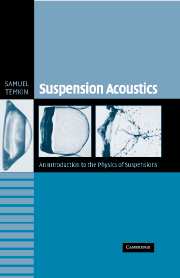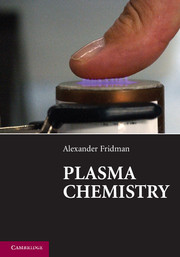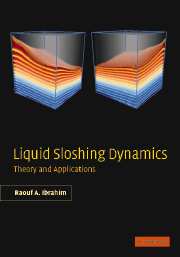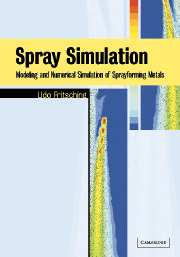Refine search
Actions for selected content:
5486 results in Thermal-fluids engineering

Suspension Acoustics
- An Introduction to the Physics of Suspensions
-
- Published online:
- 25 August 2009
- Print publication:
- 25 July 2005
1 - Introduction, Applications, and Concepts
-
- Book:
- Fundamentals of Fluid Power Control
- Published online:
- 05 June 2012
- Print publication:
- 24 August 2009, pp 1-32
-
- Chapter
- Export citation
6 - Control Systems
-
- Book:
- Fundamentals of Fluid Power Control
- Published online:
- 05 June 2012
- Print publication:
- 24 August 2009, pp 323-420
-
- Chapter
- Export citation
3 - Steady-State Characteristics of Circuit Components
-
- Book:
- Fundamentals of Fluid Power Control
- Published online:
- 05 June 2012
- Print publication:
- 24 August 2009, pp 61-170
-
- Chapter
- Export citation
Frontmatter
-
- Book:
- Fundamentals of Fluid Power Control
- Published online:
- 05 June 2012
- Print publication:
- 24 August 2009, pp i-iv
-
- Chapter
- Export citation
Index
-
- Book:
- Fundamentals of Fluid Power Control
- Published online:
- 05 June 2012
- Print publication:
- 24 August 2009, pp 489-494
-
- Chapter
- Export citation
7 - Some Case Studies
-
- Book:
- Fundamentals of Fluid Power Control
- Published online:
- 05 June 2012
- Print publication:
- 24 August 2009, pp 421-488
-
- Chapter
- Export citation
4 - Steady-State Performance of Systems
-
- Book:
- Fundamentals of Fluid Power Control
- Published online:
- 05 June 2012
- Print publication:
- 24 August 2009, pp 171-208
-
- Chapter
- Export citation
Contents
-
- Book:
- Fundamentals of Fluid Power Control
- Published online:
- 05 June 2012
- Print publication:
- 24 August 2009, pp v-x
-
- Chapter
- Export citation
Preface
-
- Book:
- Fundamentals of Fluid Power Control
- Published online:
- 05 June 2012
- Print publication:
- 24 August 2009, pp xi-xiv
-
- Chapter
- Export citation
2 - An Introduction to Fluid Properties
-
- Book:
- Fundamentals of Fluid Power Control
- Published online:
- 05 June 2012
- Print publication:
- 24 August 2009, pp 33-60
-
- Chapter
- Export citation
5 - System Dynamics
-
- Book:
- Fundamentals of Fluid Power Control
- Published online:
- 05 June 2012
- Print publication:
- 24 August 2009, pp 209-322
-
- Chapter
- Export citation

Plasma Chemistry
-
- Published online:
- 22 August 2009
- Print publication:
- 05 May 2008

Prediction of Turbulent Flows
-
- Published online:
- 12 August 2009
- Print publication:
- 08 June 2005

Liquid Sloshing Dynamics
- Theory and Applications
-
- Published online:
- 11 August 2009
- Print publication:
- 19 May 2005

Spray Simulation
- Modeling and Numerical Simulation of Sprayforming metals
-
- Published online:
- 10 August 2009
- Print publication:
- 26 February 2004

Aerodynamics of Low Reynolds Number Flyers
-
- Published online:
- 05 July 2009
- Print publication:
- 22 October 2007
1 - Introduction
-
- Book:
- The Scramjet Engine
- Published online:
- 19 January 2010
- Print publication:
- 22 June 2009, pp 1-15
-
- Chapter
- Export citation
5 - Inlets and Nozzles
-
- Book:
- The Scramjet Engine
- Published online:
- 19 January 2010
- Print publication:
- 22 June 2009, pp 87-126
-
- Chapter
- Export citation
Frontmatter
-
- Book:
- The Scramjet Engine
- Published online:
- 19 January 2010
- Print publication:
- 22 June 2009, pp i-iv
-
- Chapter
- Export citation
